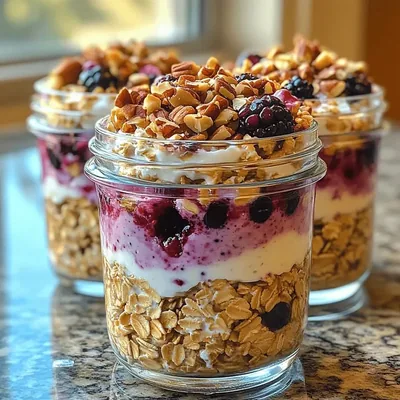Imagine the sizzle of wok‑kissed noodles, the aroma of garlic and ginger dancing with a glossy soy‑based glaze, and tender strips of chicken that soak up every ounce of flavor. That’s the magic behind Savor the Flavor: Delightful Chicken Chow Mein—a classic take‑out favorite brought to your kitchen with confidence and ease.
What makes this chow mein stand out is the balance of textures: al dente noodles, crisp‑tender vegetables, and juicy chicken, all united by a harmonious sauce that’s sweet, salty, and just a touch smoky.
This dish is perfect for busy families, weekend brunches, or a casual dinner with friends. Whether you’re feeding picky eaters or adventurous foodies, everyone will be drawn to the bright colors and bold flavors.
The cooking process is straightforward: marinate the chicken, stir‑fry the veggies, toss everything with cooked noodles, and finish with a quick sauce reduction. In under half an hour you’ll have a restaurant‑quality meal on the table.
Why You'll Love This Recipe
Restaurant‑Level Flavor: The sauce combines soy, oyster, and sesame oil with ginger and garlic, delivering the depth you expect from a Chinese kitchen without any mystery ingredients.
Speedy Weeknight Solution: With a prep time of just 20 minutes and a single‑pan cooking method, this meal fits perfectly into a busy schedule.
Customizable Veggie Load: You can swap carrots, bell peppers, snow peas, or mushrooms, making it easy to incorporate whatever’s fresh in your fridge.
Balanced Nutrition: Lean chicken provides protein, while the vegetables add fiber, vitamins, and antioxidants, creating a wholesome, satisfying plate.
Ingredients

The foundation of a great chow mein is fresh, high‑quality ingredients that each play a distinct role. The chicken supplies lean protein and soaks up the sauce, while the noodles provide a chewy canvas. A medley of vegetables adds crunch and bright color, and the sauce—built from soy, oyster, and a hint of honey—binds everything together with a glossy sheen. Aromatics like garlic, ginger, and scallions lift the dish with fragrant notes that are instantly recognizable as classic Chinese comfort food.
Main Ingredients
- 2 large boneless, skinless chicken breasts, thinly sliced
- 8 oz fresh chow mein noodles (or thin egg noodles)
- 1 cup shredded carrots
- 1 cup sliced bell peppers (red & yellow)
- ½ cup snow peas, trimmed
- 2 tbsp vegetable oil (high smoke point)
Sauce & Marinade
- ¼ cup low‑sodium soy sauce
- 2 tbsp oyster sauce
- 1 tbsp dark soy sauce (for color)
- 1 tbsp honey or maple syrup
- 1 tsp sesame oil
- 1 tbsp rice vinegar
Seasonings & Garnish
- 2 cloves garlic, minced
- 1 inch fresh ginger, grated
- 3 scallions, sliced on the diagonal
- ½ tsp crushed red pepper flakes (optional)
- Salt and freshly ground black pepper, to taste
Each component is chosen to create layers of flavor and texture. The dual soy sauces give depth and a rich amber hue, while oyster sauce adds umami. Honey balances the saltiness with a subtle sweetness, and sesame oil delivers a nutty finish. Fresh aromatics and crisp vegetables keep the dish lively, ensuring every bite is as exciting as the first.
Step-by-Step Instructions

Marinating the Chicken
In a medium bowl, combine the sliced chicken with 2 tbsp of the soy‑soy‑oyster mixture, a pinch of pepper, and a drizzle of sesame oil. Toss to coat evenly and let it rest for 10 minutes at room temperature. This short marination allows the meat to absorb flavor while staying tender during the high‑heat stir‑fry.
Cooking the Noodles
Bring a large pot of salted water to a rolling boil. Add the chow mein noodles and cook for 3–4 minutes, just until they begin to soften but still have a bite. Drain, rinse under cold water to stop cooking, and toss with a splash of oil to prevent sticking. Set aside.
Stir‑Frying the Components
- Heat the Wok. Place a wok or large skillet over medium‑high heat. Add 1 tbsp vegetable oil and swirl until it shimmers, about 30 seconds. The high temperature is essential for a quick sear that locks in moisture.
- Sear the Chicken. Add the marinated chicken in a single layer. Let it cook undisturbed for 2 minutes, then stir‑fry for another 2‑3 minutes until it’s just cooked through and lightly browned. Transfer to a plate and keep warm.
- Veggie Flash‑Cook. Return the wok to the heat, add the remaining 1 tbsp oil, then toss in garlic, ginger, carrots, bell peppers, and snow peas. Stir‑fry for 2‑3 minutes; the vegetables should stay crisp‑tender, retaining their bright colors.
- Combine Noodles & Sauce. Reduce the heat to medium. Add the cooked noodles, the reserved sauce mixture (remaining soy, oyster, dark soy, honey, sesame oil, and rice vinegar), and the cooked chicken back into the wok. Toss everything together, allowing the sauce to coat each strand. Cook for another 2 minutes, letting the sauce thicken slightly and cling to the noodles.
- Finish & Garnish. Remove from heat. Sprinkle sliced scallions and, if you like a hint of heat, the crushed red pepper flakes. Give a final quick toss to distribute the garnish evenly. The dish should look glossy, fragrant, and inviting.
Plating
Divide the chow mein among four warm plates. Serve immediately while the noodles are hot and the vegetables retain their snap. A light drizzle of extra sesame oil or a squeeze of lime can be added at the table for an extra burst of flavor.
Tips & Tricks
Perfecting the Recipe
Pre‑Cook the Noodles Al Dente. Slightly under‑cook the noodles so they finish cooking in the wok without becoming mushy.
High Heat, Quick Toss. Keep the wok hot and move ingredients fast; this preserves crunch and prevents sogginess.
Dry Ingredients Before Adding. Pat chicken and vegetables dry to achieve a true sear and avoid steaming.
Reserve a Splash of Sauce. Keep a tablespoon aside to adjust consistency at the end if the noodles look dry.
Flavor Enhancements
Add a teaspoon of Chinese five‑spice powder to the marinade for a subtle aromatic depth, or finish the dish with a drizzle of chili oil for a smoky heat. A handful of toasted sesame seeds sprinkled just before serving adds texture and a nutty finish.
Common Mistakes to Avoid
Do not over‑cook the vegetables; they should stay bright and crisp. Also, avoid using too much sauce—excess liquid will make the noodles soggy rather than glossy. Finally, resist the urge to crowd the wok; work in batches if necessary.
Pro Tips
Use a Carbon‑Steel Wok. It heats faster and creates the signature “wok‑hei” (breath of the wok) flavor.
Season the Oil. Add a pinch of salt to the oil before the first stir‑fry; it helps draw out moisture from aromatics faster.
Finish with a Splash of Fresh Lime. The acidity brightens the sauce and balances the richness of the oyster and soy.
Invest in a Good Pair of Tongs. They make tossing noodles and chicken effortless, ensuring even coating without breaking the strands.
Variations
Ingredient Swaps
Feel free to replace chicken with thinly sliced pork, shrimp, or firm tofu for a vegetarian twist. Swap carrots and bell peppers for bok choy, baby corn, or shiitake mushrooms. If you prefer a sweeter glaze, use maple syrup or brown sugar instead of honey.
Dietary Adjustments
For a gluten‑free version, use tamari or a certified gluten‑free soy sauce and ensure the oyster sauce is wheat‑free. To keep it low‑carb, substitute the noodles with shirataki noodles or spiralized zucchini. A dairy‑free diet is already accommodated; just avoid any butter finishes.
Serving Suggestions
Serve the chow mein alongside steamed jasmine rice for extra comfort, or pair it with a light cucumber‑sesame salad to cut through the richness. A simple miso soup or hot and sour broth makes a perfect starter, rounding out a complete Asian‑inspired meal.
Storage Info
Leftover Storage
Allow the chow mein to cool to room temperature, then transfer it to an airtight container. Store in the refrigerator for 3‑4 days. For longer keeping, portion into freezer‑safe bags, squeeze out excess air, and freeze for up to 2 months. Thaw overnight in the fridge before reheating.
Reheating Instructions
Reheat in a hot skillet over medium heat, adding a splash of water or broth to revive the sauce. Stir frequently for 3‑5 minutes until steaming hot. Alternatively, microwave on medium power for 2‑3 minutes, stirring halfway, and finish with a drizzle of fresh soy sauce to refresh the flavor.
Frequently Asked Questions
This chicken chow mein delivers restaurant‑style flavor with a quick, approachable method that fits any schedule. From selecting fresh ingredients to mastering the high‑heat stir‑fry, every step is designed for success. Feel free to experiment with proteins, veggies, or sauces—cooking is an adventure, and this recipe is a perfect canvas. Serve it hot, share it with loved ones, and enjoy every savory, crunchy bite.











